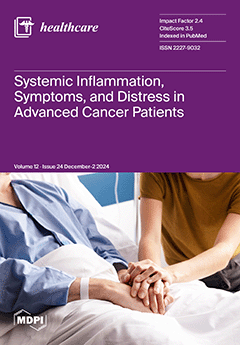Background/Objectives: Hand grip strength (HGS) reflects muscle strength and is an important indicator of sarcopenia. There is a gap in the research regarding the determinants of relative HGS that take sex differences into account. Therefore, this study aimed to evaluate the association between relative HGS and physical, behavioral, and psychological factors in menopausal women from South Korea.
Methods: This study used data obtained from the 7th National Health and Nutrition Examination Survey (2016–2018), which had a complex, stratified, and multistage sample design. A total of 2129 menopausal women aged between 40 and 64 were included in this cross-sectional study. To evaluate physical, behavioral, and psychological factors associated with relative HGS, a multiple regression analysis was used.
Results: In this study, the sociodemographic factors that influenced relative HGS were education (high school: B = 0.03,
p = 0.001; college: B = 0.04,
p = 0.003) and marital status (live with: B = 0.04,
p = 0.004). Among the physical factors, abdominal obesity (B = −0.16,
p < 0.001) and comorbidities (B = −0.03,
p = 0.026) were associated with a significantly lower relative HGS. Regarding behavioral factors, relative HGS was significantly lower for those who slept more than 8 h (B = −0.03,
p = 0.041) than for those who slept 6–8 h. Regarding psychological factors, relative HGS was significantly higher for those with fair (B = 0.04,
p = 0.001) and good (B = 0.06,
p < 0.001) self-rated health.
Conclusions: Relative HGS is associated with physical, behavioral, and psychological factors in menopausal women. These findings can inform research and guidelines for sarcopenia prevention using relative HGS as an indicator of health status.
Full article






